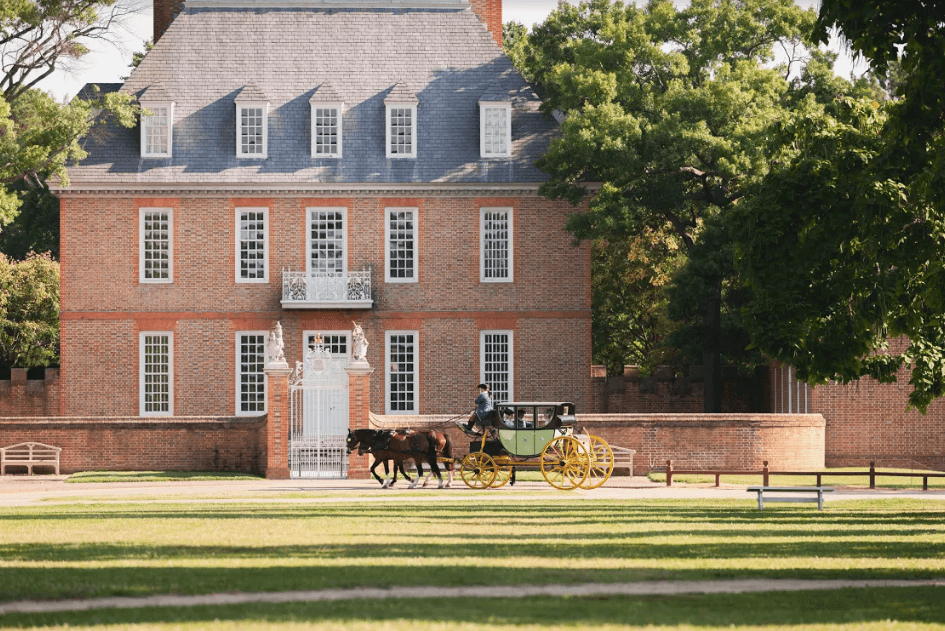
A carriage passes by the Governor's Palace. The palace was built to project British authority. Colonial Williamsburg Foundation/Colonial Williamsburg
WILLIAMSBURG, Virginia—With a quick look, the hairdresser sizes us up as we walk into her shop on a sunny afternoon.
She speaks to us kindly but makes plain her dismay at our physical appearance.
